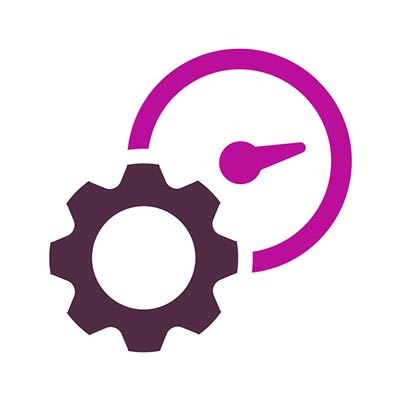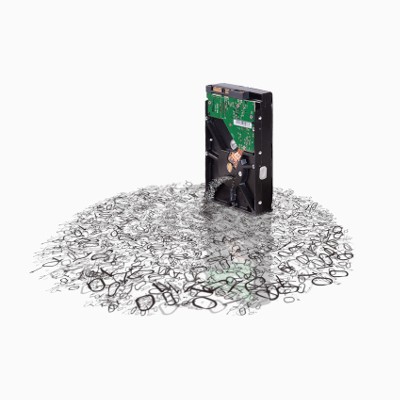Business continuity is difficult to talk about for some business owners, specifically because no one likes to talk about the worst case scenario. What would you do if your business were to suddenly go through a disaster? Do you have a plan in place? If not, let’s talk about that. Here are some aspects of business continuity that you must consider. Remember; your company’s future depends on it!
k_Street Consulting, LLC Blog
For all its benefits, remote work can introduce plenty of complications. These complications can easily make employees question a lot of things about their careers, including whether or not they should continue working for the same company they have been. This has been particularly the case amongst workers with children also in the home.
Working from home adds quite a few additional wrinkles into the workday, including a few that pertain to your team’s communicative capabilities. With many different people operating at their best through different forms of communication, establishing which of these forms best suits your needs is crucial. Let us consider some of the options you have, whether you’re fully investing in a future of remote operations, or simply planning a more hybrid approach as time passes.
Managed IT services have grown from a niche offering to a well-known concept in recent years, with many businesses already relying on outsourced IT services to some degree. In many ways, this only makes sense, as it allows businesses to enjoy access to services that would otherwise cost too much for them to independently adopt and support.
With businesses depending on technology more now than ever, it stands to reason that the collaboration solutions that are available would improve as demand increases. Today’s business needs a collaboration solution that allows them to communicate, manage tasks, and be a reliable solution for teams separated by more than just a wall. Let’s take a look at the modern collaboration tool and how they provide powerful benefits for the modern business.
When the Internet was established, it was a marvel. Now people could move information across the world in a matter of seconds. This is why the term “world wide web” was coined. Nowadays, there are literally billions of users on the Internet and the rules have had to be changed. This has some online services in conflict with government regulations and has an impact on how users are able to use the Internet. Let’s look at a couple of examples.
AI has been one of the leading innovative topics to hit the technology world over the past couple of years. At first, people thought that AI was only the process of creating machines that will inevitably destroy the human race, and didn’t understand that algorithmic machine learning could have stark benefits for business and society. Today, AI can be found in all types of different pieces of software. Let’s take a look at a couple of ways AI is currently being used in business.
Considering that 2020 was… less than great for many businesses, it should come as no surprise that there will likely be difficulties that carry on for some time into 2021. Naturally, these difficulties will require some new ideas and fresh thinking to properly resolve, as well as an openness to adopting innovative technologies. Let’s look ahead to some of the IT challenges we anticipate that 2021 will hold for businesses.
Businesses of all sizes have been able to successfully overcome operational challenges by rethinking and adapting the technology they utilize. Let’s consider a huge example and look at what The Lego Group (as in the building blocks) has done to address some of their technological challenges with improved solutions—as well as how your business can do the same.
Since its widespread adoption, the telephone has proved to be a hugely beneficial tool for businesses of all kinds… despite the considerable costs that it can incur. Fortunately for your business’ budget, however, there is a far more cost-effective means for you to enjoy the benefits of telephony: VoIP, short for Voice over Internet Protocol. Let’s go over some of the reasons why VoIP is just a better option for any business.
For most people, the term tech support is pretty self-explanatory. The terms managed services and MSP… not so much. Let’s go over what makes managed services and what we do as a managed service provider so different from the IT support you may be used to. To start, we’ll review where the idea of an MSP came from, and end with what one like us can do for you.
When you see that we offer tech support, you almost certainly have an idea of what that means. However, upon hearing about our typical service delivery for the first time, many people are really surprised by how different our services—as a managed service provider—are. These differences are not an accident. Let’s go back in time a little while to explore how managed services came about, and what difference they could make for you.
If you are a regular visitor to our blog, you know just how important we think data backup is for any business that relies on data. If your business stores and creates data, you need to have a backup strategy in place. It’s that simple. Today, we want to discuss how to improve your data backup strategies with a BDR.
Business leadership is an important trait for more than just a business’ leader by title. It is something that should be present at every level, encouraged by the individual at the top. To do so, it helps to ask your team the right questions to put them in a mindset of responsibility for the business’ well-being. Here, we’ve shared some of these questions to get you started.
As the pandemic enters its third quarter, many places have the spread of the COVID-19 virus under control and are starting to open up offices and other workplaces. Ultimately, it is the business owners’ and managers’ decision whether or not to demand attendance in an office, as most jobs completed in one can be effectively completed from home. For businesses that are opening their office and inviting their employees back, technology is still going to play a significant role. Let’s take a look at what IT is going to be important for people returning to the office after all this time.
For a lot of businesses, 2020 has seen some major challenges. Many SMBs feel like they are in a snow globe attached to a paint mixer that is always switched on. With all the problems laid out in front of them, many businesses have decided that in order to protect their business that they would subscribe to a strategy of proactivity. Let’s take a look at a couple of ways managed services help keep you ahead.
Unfortunately, small businesses are having a hard time right now. If your operations are to continue throughout this time, some significant changes are going to be required. Here, we’re looking at how you can use current technologies to help sustain your business. Chances are, you may already have these technologies available to you.
Okay, time for some real talk: There is no denying that 2020 has held a few unique challenges for everyone who runs a business. Economic challenges, political tensions, and an honest-to-goodness pandemic have all thrown us all for a loop. As a result, it is important that businesses all adjust their technology priorities to survive. Let’s discuss these priorities, and how they will need to shift.
With businesses slowly resuming their operations, it is effectively guaranteed that this process will be bumpy. However, this in and of itself presents an opportunity for these businesses to improve their operations for long-term benefits. Whether you are actively opening your doors or ramping up to do so, you need to have today’s technology supporting you and your activities.
With less than half of 2020 behind us, many of us would already like a re-do of this year. With a global emergency impacting the personal and professional lives of so many, businesses are struggling right now. For these organizations to survive, they will need to get the most out of every business investment. When it comes to their essential technology, we recommend investing in managed IT services.
While managed services have made more sense for businesses to utilize for some time now, current events have made it even more apparent that this model of IT support is the only feasible option for businesses going forward. However, it has also never been clearer that you need to be selective in who you choose to provide this support.
The COVID-19 outbreak has a lot of business owners looking over their supply chains and their budgets wondering how they are ever going to make things work. If yours is like most businesses, you use IT to make your business smarter, more efficient, and help your workforce be more productive. Unfortunately, with recessionary winds swirling around as a result of this terrible situation, it may become inevitable that your business will have to do more with less for some time.
There are many reasons that you might want to make your office a little more “green.” As it happens, there are just as many ways that you can put forth the effort to do so. If you’re trying to run a more environmentally-conscious business, we have a selection of a few relatively simple ways to start.
There is a major problem that the owners of most small-to-medium-sized businesses run into: impatience. Their business might not be growing at the rate they like, or they may just have too much work to accomplish in order to grow. Whatever the problem is, outsourcing parts of a business can really bring a whole lot of benefits. Let’s take a look at how outsourcing can help the modern business.
In business today, information technology is being utilized in a manner that can make it seem like business isn’t possible without it. In some cases, it isn’t, but then there is technology being deployed that is simply inefficiently deployed, used haphazardly, and could be looked on as more of a liability than anything else. Frequently getting an IT assessment can help keep your IT infrastructure secure, agile, and aimed at solving your organization’s operational issues. Today, we’ll take a look at the IT assessment.
Today’s business is much more collaborative than it was in the past. This means that there are a lot more communications to manage. Small businesses may use technology to try and bridge the gaps and large businesses use it to manage huge and complicated workflows. Today, we take a look at the average business’ internal communications, and which tools are best for increased productivity.
Technology gives business owners opportunities to expand, and essentially has become the center of most business practices. Marketing, customer contact, all sorts of inter and intra communication methods now depend heavily on technology. Let’s take a look at what the past has brought, and what the future could bring us.
Once upon a time, the printer was absolutely crucial for business to be conducted properly, but nowadays, the use of digital solutions has greatly reduced the need of printing things in greater volumes. However, this is not to say that printing is not still an important facet of your business to manage. Here, we’ll examine how print management can help a business do so.
When you think of professional services, you may think about smart people doing important things that took them years to learn how to do. You may not, however, consider them the kind of people that lean on their technology to make their businesses work. This is because for the longest time, technology wasn’t a major part of the professional services landscape.
It has reached the point that, if you have a business, you had better have a backup prepared. Otherwise, the digital data that modern businesses like yours rely on is vulnerable to loss. Of course, depending on the age of your business, you may have data that no longer applies to your operations. That’s why we’re going over how to select the data you should continue to back up.
Any healthy market economy relies on innovation. The simple act of making bright ideas even brighter helps boost economic efficiency and growth, creating a higher standard of living. Business processes are being transformed through information technology. Here, let’s look at how some of these shifts are shaping up.
Today, large companies typically use their data to help them make more educated business decisions. This strategy can actually benefit smaller businesses as well. However, they often don’t think they have enough data to facilitate analytics or BI (Business Intelligence) platform. Let’s take a look at how small businesses can use their big data.
Old-school business information technology support isn’t necessarily wrong, but it most definitely isn’t cheap nor efficient. IT support strategies are developing in ways that some time ago, would have thought to be unheard of. Your business no longer needs a full on-site staff designated to maintaining network security or updating software. In part two of our five-part series, we discuss how your business can have the support it needs through managed services.
Computers sometimes appear to have a mind of their own. For businesses, this is less than ideal. If the support structure is not in place to take control of your business’ infrastructure, your business' profitability may be negatively impacted. In this five-part series, we will discuss how being proactive keeps your technology in check.
Small business owners have a lot on their minds and a ton of responsibilities that the average employee doesn’t have. Small businesses often force business owners into taking on various roles that may or may not fit their specific skill set, including CIO or CTO. Of course, the Chief Information Officer and Chief Technology Officer are responsible for technology-related decisions, but the reality of the matter is that you only want technology professionals in these roles… not just professionals who happen to be the most knowledgeable folks in your office.
Downtime is a killer for any business. When a business is forced into confronting its technology support deficits, it usually means that they’ve been dealing with too much broken technology and downtime, and the costs associated with it. One way your business can avoid losing huge chunks of time to broken technology is to add a professional help desk to support your IT administrator.
All businesses need some type of communication infrastructure, especially considering how connected today’s workplace is. Today we will look at some of the best communications solutions out there for businesses of all sizes and industries, including many that you may (or may not) have already implemented for yourself. You can use this knowledge to fuel improvements to your own communications infrastructure.
Technology has enabled businesses to do more with less, although this isn’t always the best thing. Many small businesses simply feel that they don’t have the technology solutions that properly resolve their challenges. However, these solutions exist, and offer all the robust functionality that many businesses seek.
When considering a business’ strengths, there is a tendency to focus on its more quantifiable aspects - it generates x dollars in revenue, or leverages advanced solutions a, b, and c. While these kinds of competitive advantages are valuable to have, it is also important to recognize how critical one of your more qualifiable strengths can be: your company culture.
Whether they are expected or not, there will always be situations when your business incurs some damage or loss due to natural disasters, downtime, or other issues. You might find that a little preparation could have kept some of the disaster at bay, and it could honestly save you a ton in terms of lost time and resources. In fact, it could save your organization from the brink of disaster.
Do you know what can completely kill a business’ momentum? Downtime. Businesses of all types look for a myriad of ways to save themselves the headaches that come from significant downtime. One way that is sure to reduce an organization’s downtime is by having conscientious IT management and support at the ready. One problem with this is that it's typically costly to hire a team of IT professionals with the experience and knowledge to keep your technology up and running.
One industry that most people wouldn’t necessarily consider to be IT-rich is manufacturing. With automation becoming a major point of emphasis for many businesses, IT has taken on a larger role for today’s small and medium-sized manufacturers. Today, we will take a long look at what the manufacturer’s IT needs are, and what solutions they use to help steer their company forward.
Technology training is something that all employees have to go through at some point in their career, whether they are a CEO learning how to use a new solution, or an end user that uses it every day. However, we know that your employees don’t necessarily have time to sit down for training, as they likely have other responsibilities that must be tended to. How can you make sure technology training is a valuable investment on your part?
Business owners; ever sit down and run through all of your expenses and ask yourself (or your accountant) what you are actually paying for? We’ve been there. Technology expenses like hardware, software licensing, cloud hosting, management and maintenance, support, and service agreements all add up quickly and it makes it easy to question what you can trim to save money without sinking the ship, especially when you rarely need to call your current IT provider.
A.I. is one of those technologies that captivates the imagination with endless possibilities. You can’t turn your head these days without using something integrated with early artificial intelligence. Machine learning platforms, which are very rudimentary forms of A.I. are now being used to improve many of the tools a small business uses. Today, we will briefly go into what machine learning is and how small businesses are using it to their advantage.
The holiday season is upon us, and with it comes the spirit of gift giving. Your IT department would certainly appreciate receiving a few gifts of their own to dabble with over the next business year. We’ve compiled a list of the best technology you can get your IT department to save them both time and resources.
Telephones have been around for so long that nobody alive today lived in a time where they weren’t in use. While the general use for the telephone has remained the same, the major difference between older telephone systems and many of the telephone platforms available today is how they are deployed. Businesses have more options for telephone services today than they have ever had before, and with so many options at your disposal, we’re happy to help you weed out the right one for you.
It’s no secret that cloud computing has become a major part of what most small businesses’ operations. One aspect of business administration that many businesses keep in-house is their HR department. Today, we’ll take a look at HR and payroll software, and how moving your business’ human resources department to the cloud is a good solution.
Businesses these days rely on technology in order to function properly, but what happens when this technology doesn’t operate as intended? If your organization doesn’t have a dedicated help desk on-premise, you’re probably suffering from unnecessary downtime and technology troubles with no recourse.
As the technology that businesses have available to them develops, so does the propensity for this technology to be used unethically. This has become especially apparent where data collection is concerned, and what that data is used for after it has been collected. How can you keep operations moving both productively, and ethically?
There are various types of user accounts that your employees and administrators can use to access their workstations, but one of the biggest points of contention to consider when planning out data access is the use of administrator accounts. Specifically, you want to avoid handing out administrator account access to users like it’s Halloween candy.
Chances are you’ve encountered a couple of tech support scams in your days. These people frequently dial random numbers in an attempt to get the person on the end of the phone long enough to trust them with remoting into the device. These kinds of scams are designed to be as vague as possible, and since most people have computers that are at least a couple years old, they tend to experience some kind of sluggishness that makes them believe that something is genuinely wrong. This can turn out to be a grave mistake.
Your business depends on a budget to come out in the black at the end of the fiscal year, and the way you invest that budget will have a considerable impact. As you create this budget, your IT needs to be one of your top considerations - after all, it is what effectively powers the modern business. Here, we’ll discuss how diligently incorporating your IT into your budget can help your business be more successful down the line.
It’s always exciting when the idea of a business becomes real by finding a space to conduct operations. It’s extra exciting when a business has outgrown its space and has to move into a new space. Whatever situation you are encountering, it can be excruciatingly difficult to affordably move into new offices.
All businesses hope that they’ll never have to use their data backup and disaster recovery plan, but the point stands that each business should have one, just in case of a worst-case scenario. For a small business with a limited budget, the prospect of investing in a solution they might never need is daunting. To help you get started, we’ve put together a couple of basic backup practices that you should keep in mind for your business.
Your business deals with all types of troubles, but one trouble that can be extraordinarily costly is when your organization's technology doesn’t work properly. That’s why many businesses hire an IT staff who work to mitigate technology-related problems. One issue you should be cognizant of is cost. Typically, IT professionals have training, certifications, and experience and demand an above average salary. If you have a small or medium-sized business that is working with tight margins as it is, it can be extremely difficult to take on new personnel costs; especially ones that don’t directly result in bringing revenue through the door.
Commuting to and from the office is a regular occurrence all over the world. In the United States alone, according to the U.S. Census Bureau, the average commute for the everyday worker is around 25 minutes. Even if this commute is necessary, it could be holding your business back from achieving its full potential.
Technology can be fickle at times. When it’s not working properly, it can hold your business back from reaching its maximum potential. Therefore, in order to maximize your bottom line, it becomes common sense to ensure that your technology is in proper working order at all times. The problem lies in the fact that you may not necessarily specialize in technology management, and don’t have the time or budget to perform maintenance yourself. What’s the SMB to do?
Working remotely is made much easier thanks to today’s modern technology solutions. Many organizations have at least part of their workforce working remotely, but without the proper support, remote work wouldn’t be possible. With the latest technology and a couple of best practices, the remote worker can be just as productive, if not more so, than the in-house worker.
Everyone loves a good vacation, especially if you have the good fortune of having a reliable staff on-hand that can handle the administration of your office while you’re away. Although, it might be tempting to just cut yourself off from technology and enjoy your time off, doing so might cause problems down the line that could easily be prevented by simply checking your email or calling home-base once in a while.
It’s been over two years since Microsoft stopped providing Windows XP with security updates and patches. The Windows operating system was known as one of the most popular Windows operating systems ever. Both businesses and consumers were affected by this major update, being forced to migrate to more recent operating systems in order to stay secure. Thankfully, an upgrade to Windows 10 isn’t nearly as difficult as one from XP to Windows 7, largely because of the hardware costs involved.
A data loss incident is considered a major disaster scenario, especially for small and medium-sized businesses. All it takes is one moment to lose your business’s entire data infrastructure. We’ll walk you through a story that should serve as a cautionary tale, one that hopefully teaches you to adhere to data backup and disaster recovery best practices.
 Eliminating unnecessary costs is a natural part of doing business. By “trimming the fat,” so to speak, organizations can optimize operations and profits. Automation technology is instrumental to this plight, but as these systems grow more advanced and capable, even professional employees are finding themselves at risk of losing their jobs to cheaper, more efficient automated systems.
Eliminating unnecessary costs is a natural part of doing business. By “trimming the fat,” so to speak, organizations can optimize operations and profits. Automation technology is instrumental to this plight, but as these systems grow more advanced and capable, even professional employees are finding themselves at risk of losing their jobs to cheaper, more efficient automated systems.
 Windows 10 might be the latest operating system from Microsoft, but despite its great new business-friendly features, many are still hesitant to upgrade. For those who don’t want Windows 10, there are reports of unwanted (and unexpected) Windows 10 updates. Now, here’s the big question: would you want your business’s software upgraded without your consent?
Windows 10 might be the latest operating system from Microsoft, but despite its great new business-friendly features, many are still hesitant to upgrade. For those who don’t want Windows 10, there are reports of unwanted (and unexpected) Windows 10 updates. Now, here’s the big question: would you want your business’s software upgraded without your consent?
 Two things are true today: 1) having a good reputation is critical to the success of any organization, and 2) the Internet is a vast network where seemingly anything goes. How then can you make sure that what’s said online about your organization isn’t hurting your reputation? By taking some basic online reputation management actions, you can stay one step ahead of the virtual haters and keep your reputation intact.
Two things are true today: 1) having a good reputation is critical to the success of any organization, and 2) the Internet is a vast network where seemingly anything goes. How then can you make sure that what’s said online about your organization isn’t hurting your reputation? By taking some basic online reputation management actions, you can stay one step ahead of the virtual haters and keep your reputation intact.
 March 31st is World Backup Day! This occasion begs the question, “How much thought have you put into where your data is stored?” If you haven’t thought through your data storage options, then your files may be located in several different places. This could make accessing your data difficult, as well as jeopardize your network’s security. To get you started, let’s take a look at these four data storage options.
March 31st is World Backup Day! This occasion begs the question, “How much thought have you put into where your data is stored?” If you haven’t thought through your data storage options, then your files may be located in several different places. This could make accessing your data difficult, as well as jeopardize your network’s security. To get you started, let’s take a look at these four data storage options.
 Modern businesses are reliant on certain parts of their infrastructure to keep operations functioning. For example, if your building’s electricity were to go down, what would you do? What about if you lost Internet access? Would your business be able to keep your employees busy, or would the downtime experienced be enough to cause panic?
Modern businesses are reliant on certain parts of their infrastructure to keep operations functioning. For example, if your building’s electricity were to go down, what would you do? What about if you lost Internet access? Would your business be able to keep your employees busy, or would the downtime experienced be enough to cause panic?
 2015 saw a significant increase in high-profile hacking attacks in organizations of all disciplines: healthcare, government, and even large entertainment companies all fell victim to data breaches. In light of these attacks, valuable lessons can be learned through analyzing the types of records that were stolen. In 2015, over half of all records exposed to hackers were passwords and email addresses.
2015 saw a significant increase in high-profile hacking attacks in organizations of all disciplines: healthcare, government, and even large entertainment companies all fell victim to data breaches. In light of these attacks, valuable lessons can be learned through analyzing the types of records that were stolen. In 2015, over half of all records exposed to hackers were passwords and email addresses.
 Technology, while a great asset that can be leveraged for your benefit, can also frighten businesses due to how unpredictable it can be at times. The constant threat of data loss, identity theft, and hardware failure can cripple your business’s ability to retain operations. Specifically, businesses can learn about risk management by analyzing the processes used by an industry where risk management is absolutely critical: nuclear power plants.
Technology, while a great asset that can be leveraged for your benefit, can also frighten businesses due to how unpredictable it can be at times. The constant threat of data loss, identity theft, and hardware failure can cripple your business’s ability to retain operations. Specifically, businesses can learn about risk management by analyzing the processes used by an industry where risk management is absolutely critical: nuclear power plants.
 More businesses than ever before are finding value in allowing their workers to work from the comfort of their own homes, rather than have them drive all the way to the office to do a job that can be done from anywhere with an Internet connection. More importantly, it’s much more cost effective for businesses to allow for remote workers. How can you make it as easy as possible for remote workers to get their jobs done?
More businesses than ever before are finding value in allowing their workers to work from the comfort of their own homes, rather than have them drive all the way to the office to do a job that can be done from anywhere with an Internet connection. More importantly, it’s much more cost effective for businesses to allow for remote workers. How can you make it as easy as possible for remote workers to get their jobs done?
 Any user of technology knows the frustration of periodically replacing it with better and more recent technology. In fact, the latest gadgets seem to be outdated just months after they’re released. Many people believe that this unprecedented growth in the technology industry could lead to a decrease in PC sales, but it also means that devices are growing more reliable.
Any user of technology knows the frustration of periodically replacing it with better and more recent technology. In fact, the latest gadgets seem to be outdated just months after they’re released. Many people believe that this unprecedented growth in the technology industry could lead to a decrease in PC sales, but it also means that devices are growing more reliable.
 There are few things more important than the continuity of your business. Your livelihood, and that of your employees, depends on the continued functionality of your organization. Therefore, it becomes necessary to do all that you can to ensure your business is protected from an unexpected downfall, due to data loss, natural disasters, and other means.
There are few things more important than the continuity of your business. Your livelihood, and that of your employees, depends on the continued functionality of your organization. Therefore, it becomes necessary to do all that you can to ensure your business is protected from an unexpected downfall, due to data loss, natural disasters, and other means.
 October is Cyber Security Month and we want to use this time to bring awareness to the different aspects of cyber security. One often overlooked element of cyber security is employee risk management. What level of risk does your staff pose to your network’s security? You can easily find this out by taking an online test.
October is Cyber Security Month and we want to use this time to bring awareness to the different aspects of cyber security. One often overlooked element of cyber security is employee risk management. What level of risk does your staff pose to your network’s security? You can easily find this out by taking an online test.
 Cost drives business, this much cannot be denied. When the technology your business relies on fails, you have to get it repaired or replaced quickly in order to keep the resulting downtime from damaging your business. The traditional method of computer repair is much like when your car is in disrepair. When your technology isn’t working properly, your organization reacts to the problem by calling your friendly neighborhood computer repair guy.
Cost drives business, this much cannot be denied. When the technology your business relies on fails, you have to get it repaired or replaced quickly in order to keep the resulting downtime from damaging your business. The traditional method of computer repair is much like when your car is in disrepair. When your technology isn’t working properly, your organization reacts to the problem by calling your friendly neighborhood computer repair guy.
 How difficult is it for your organization to innovate and come up with new ideas? Sometimes it might seem impossible when it feels like all the good ideas are already taken. Normally, advancements in technology are a primary fuel for innovation within a company. If you aren’t feeling inspired, there are several new ways you can approach innovation. Here are three ideas.
How difficult is it for your organization to innovate and come up with new ideas? Sometimes it might seem impossible when it feels like all the good ideas are already taken. Normally, advancements in technology are a primary fuel for innovation within a company. If you aren’t feeling inspired, there are several new ways you can approach innovation. Here are three ideas.
 Having confidence in your ability to run your business is an important thing to have, but it doesn’t matter how much confidence you have if your customers beg to differ. After all, without them, your business wouldn’t be where it is today. This is why it’s important to listen to what your customers say, and if it’s not positive, you need to resolve the problem as quickly as possible.
Having confidence in your ability to run your business is an important thing to have, but it doesn’t matter how much confidence you have if your customers beg to differ. After all, without them, your business wouldn’t be where it is today. This is why it’s important to listen to what your customers say, and if it’s not positive, you need to resolve the problem as quickly as possible.
 Running a business can be an exhilarating experience, mainly due to the degree of risk that’s involved. When you’re the one calling the shots, your success is only limited by your ability to lead. Then there’s the chance that things won’t work out and you’ll fail miserably. When your business goes the way of the latter, how do you know when your your company is finished and it’s time to call it quits?
Running a business can be an exhilarating experience, mainly due to the degree of risk that’s involved. When you’re the one calling the shots, your success is only limited by your ability to lead. Then there’s the chance that things won’t work out and you’ll fail miserably. When your business goes the way of the latter, how do you know when your your company is finished and it’s time to call it quits?
 As far as you’re concerned, managing a business is a highly engaging job. However, your staff might feel differently about their jobs. According to a recent study by Deloitte Global Human Capital Trends, only 13 percent of employees are legitimately engaged in their work. A disengaged worker is a serious problem for any workplace.
As far as you’re concerned, managing a business is a highly engaging job. However, your staff might feel differently about their jobs. According to a recent study by Deloitte Global Human Capital Trends, only 13 percent of employees are legitimately engaged in their work. A disengaged worker is a serious problem for any workplace.
 There seems to be some confusion in the workplace regarding the privacy of digital communications made over a company network. Can an employer read an employee email or record a phone call without employee consent? Is instant messaging a safe place for employees to complain about their jobs? The answer to these questions may surprise workers and business owners alike.
There seems to be some confusion in the workplace regarding the privacy of digital communications made over a company network. Can an employer read an employee email or record a phone call without employee consent? Is instant messaging a safe place for employees to complain about their jobs? The answer to these questions may surprise workers and business owners alike.
 As a business owner, you know how difficult establishing a paid time off policy is. Providing too little can make your business seem unfair, but giving away too much might make you feel like you’re losing money. Therefore, it might come as a shock to even suggest the idea of unlimited PTO. Some business owners, on the other hand, find it completely effective, and that it can even improve the quality of work.
As a business owner, you know how difficult establishing a paid time off policy is. Providing too little can make your business seem unfair, but giving away too much might make you feel like you’re losing money. Therefore, it might come as a shock to even suggest the idea of unlimited PTO. Some business owners, on the other hand, find it completely effective, and that it can even improve the quality of work.
 One of the more recent office trends seems to be the open office. While this is more space-efficient and supposedly helps foster productivity and communication, there’s also the possibility that it can do exactly the opposite. According to a 2002 study from Environment and Behavior, the open office can be a hindrance to unlocking the full potential of all employees.
One of the more recent office trends seems to be the open office. While this is more space-efficient and supposedly helps foster productivity and communication, there’s also the possibility that it can do exactly the opposite. According to a 2002 study from Environment and Behavior, the open office can be a hindrance to unlocking the full potential of all employees.
 When a print job doesn’t go exactly how you need it to, it’s normal to call your printer some choice words, which may include one of the many colorful synonyms for excrement. Perhaps this stems from a printing network and a toilet having a lot in common. How’s that you ask? Let’s clear the air and find out.
When a print job doesn’t go exactly how you need it to, it’s normal to call your printer some choice words, which may include one of the many colorful synonyms for excrement. Perhaps this stems from a printing network and a toilet having a lot in common. How’s that you ask? Let’s clear the air and find out.
 If you’re one of those people who are always checking their inbox, you might be dealing with a lot of unnecessary stress in the workplace. A study has linked constantly checking your email inbox to higher stress levels. While this might not come off as much of a surprise, researchers at the University of British Columbia have managed to put a number to the maximum amount of times you should be checking your email to minimize stress.
If you’re one of those people who are always checking their inbox, you might be dealing with a lot of unnecessary stress in the workplace. A study has linked constantly checking your email inbox to higher stress levels. While this might not come off as much of a surprise, researchers at the University of British Columbia have managed to put a number to the maximum amount of times you should be checking your email to minimize stress.
 Mobile devices have become such a popular computing medium that they’ve infiltrated the workplace. While the business owner might feel that these mobile devices can help employees gain more regular access to corporate data for more working hours, these same devices could potentially eat up those work hours with time wasted on mobile gaming or other recreational apps. What’s the truth about BYOD? Let’s find out.
Mobile devices have become such a popular computing medium that they’ve infiltrated the workplace. While the business owner might feel that these mobile devices can help employees gain more regular access to corporate data for more working hours, these same devices could potentially eat up those work hours with time wasted on mobile gaming or other recreational apps. What’s the truth about BYOD? Let’s find out.
 IT professionals will always talk about the importance of data backup, and why shouldn’t we? It is a crucial process each business owner should understand. It really comes down to this: Many of the IT services we provide can present your endeavor with value, but only one of them can perform miracles, the Backup and Disaster Recovery (BDR) solution. The BDR not only allows for redundant backup of the files you need most, it provides a solution for your business to continue to exist in the face of pure devastation.
IT professionals will always talk about the importance of data backup, and why shouldn’t we? It is a crucial process each business owner should understand. It really comes down to this: Many of the IT services we provide can present your endeavor with value, but only one of them can perform miracles, the Backup and Disaster Recovery (BDR) solution. The BDR not only allows for redundant backup of the files you need most, it provides a solution for your business to continue to exist in the face of pure devastation.
 Have you ever wondered where some of the top talent in the world comes from? Not everyone knows how to find the best vendor for their needs, but with our IT service called vendor management, we find fixes to problems which lie outside our area of expertise. Despite what you might think, you may not be entirely unfamiliar with vendor management. In fact, you use it for several everyday services as it is.
Have you ever wondered where some of the top talent in the world comes from? Not everyone knows how to find the best vendor for their needs, but with our IT service called vendor management, we find fixes to problems which lie outside our area of expertise. Despite what you might think, you may not be entirely unfamiliar with vendor management. In fact, you use it for several everyday services as it is.
 Email, the most popular medium of office communication, offers spectacular boons to a business, but it’s not without its flaws. Spam is the #1 enemy of the email inbox, and it is a time-consuming productivity killer. Even the most vigilant workers get hit with spam from time to time, but that doesn’t mean you need to.
Email, the most popular medium of office communication, offers spectacular boons to a business, but it’s not without its flaws. Spam is the #1 enemy of the email inbox, and it is a time-consuming productivity killer. Even the most vigilant workers get hit with spam from time to time, but that doesn’t mean you need to.












































































